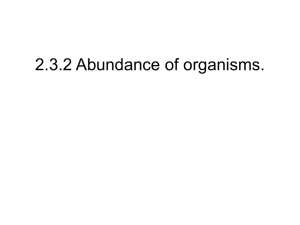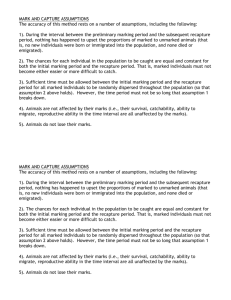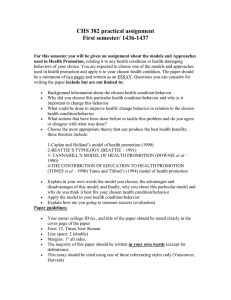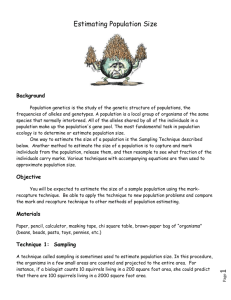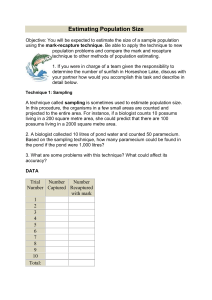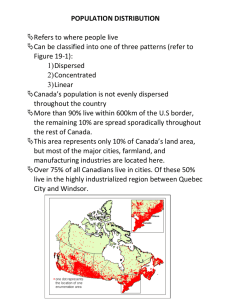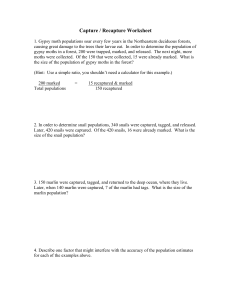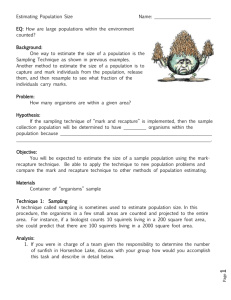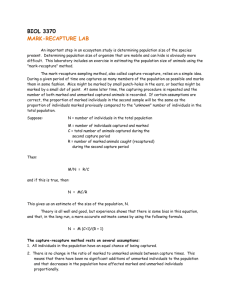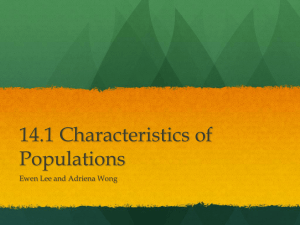Mark and Recapture
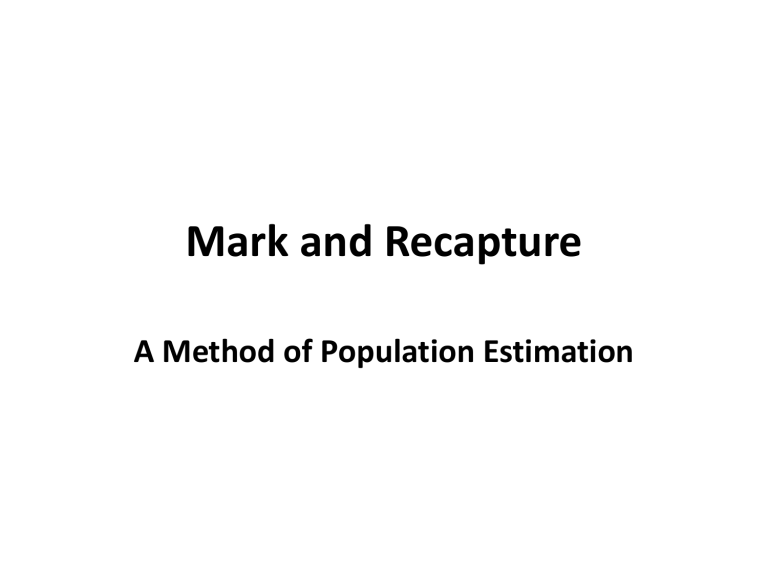
Mark and Recapture
A Method of Population Estimation
How it works:
• Capture and Mark a number of individuals in a natural population.
• Return them to that population.
• After “awhile”, capture/recapture individuals in that same population as a basis to estimate population size.
Lincoln-Peterson Index
• If a proportion of a population was captured, marked, returned to the population, and a second sample was taken; the proportion of individuals marked in the second sample would be the same as was marked initially in the total population!
Example (previous slide)
Marked Initially
----------------------------
Total Population Size
12 4
----- = -------
X 15
• X = 43
Marked Recaptured
= -----------------------------
Total in Second Sample
Assumptions…
• 1. Nothing has happened to the natural population between capture and recapture.
• 2. Chances for being captured are equal for all individuals.
• 3. Sufficient time between capture and recapture for adequate “mixing” back into the population.
• 4. Animals don’t lose their marks.
• Random
Population Dispersion
• clumped
• uniform
Population density
• Dhaka, Bangladesh
•
• Comparing Population Density
Population Density = Number of people/unit area
• Example: North Carolina has 9,900,000 people living in 139,390 km2. What’s the population density?
• country population area (km2)
• Bangladesh 158,500,000 147,570
• Nigeria 173,600,000 923,768
• United States 313,900,000 9,827,000
• China
• Haiti
• India
1,350,000,000 9,707,000
10,200,000 27,750
•
• Russia
Canada
143,500,000 17,100,000
34,880,000 9,985,000
• Uttar Pradesh 199,582,000 243,286
1,240,000,000 3,288,000 density (people/km2)
